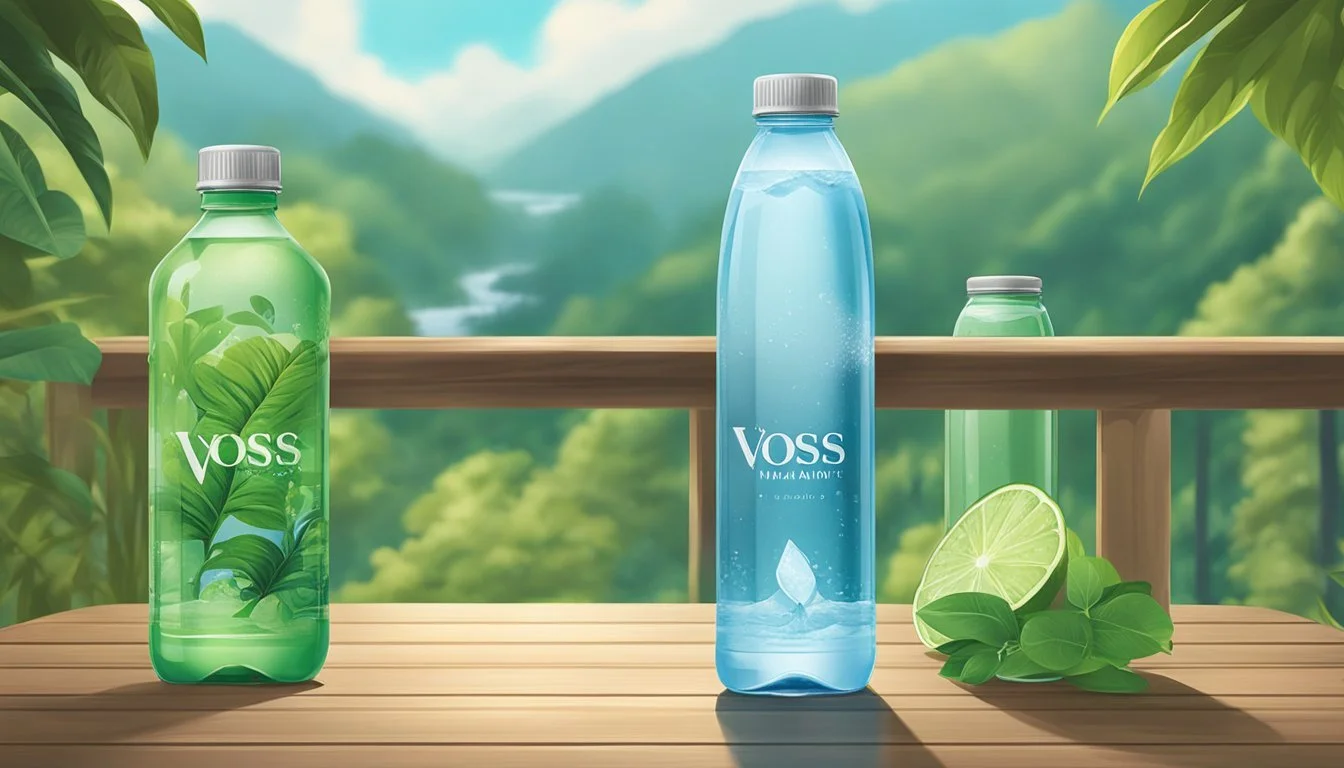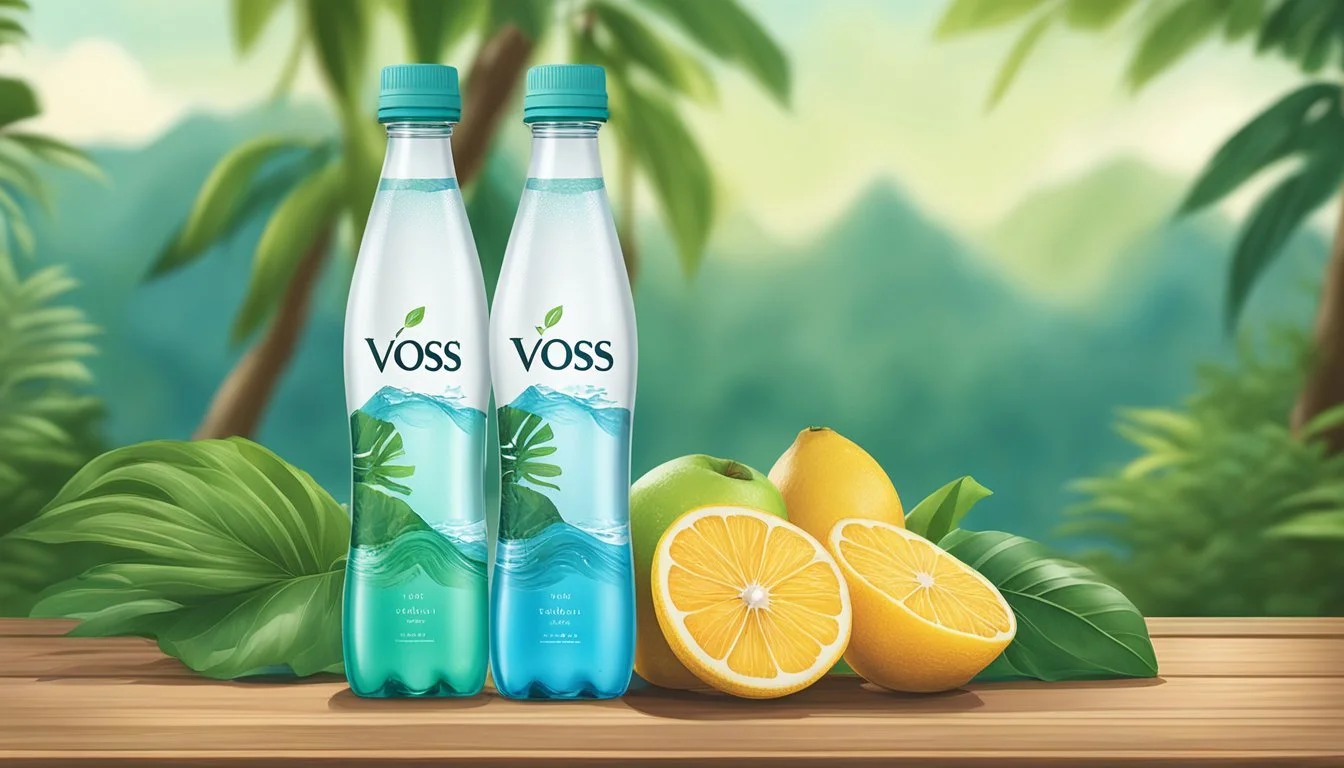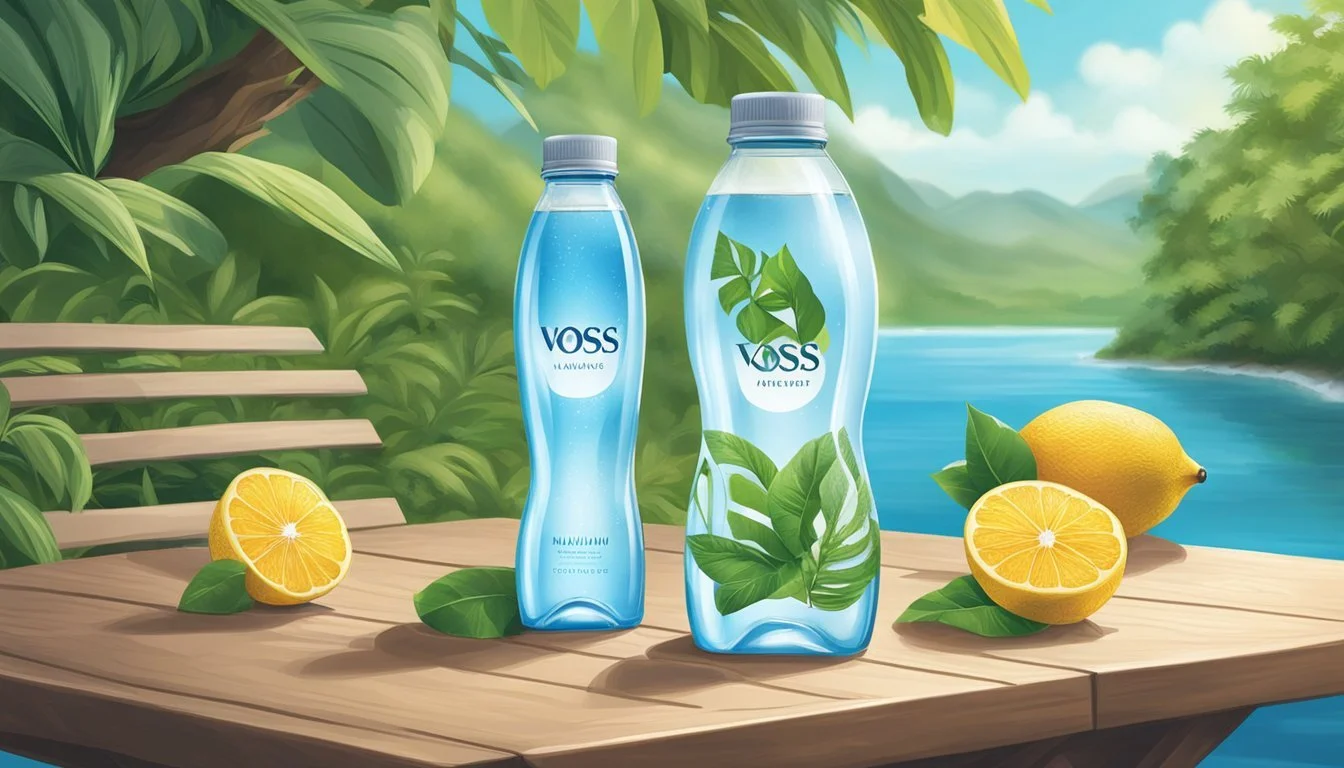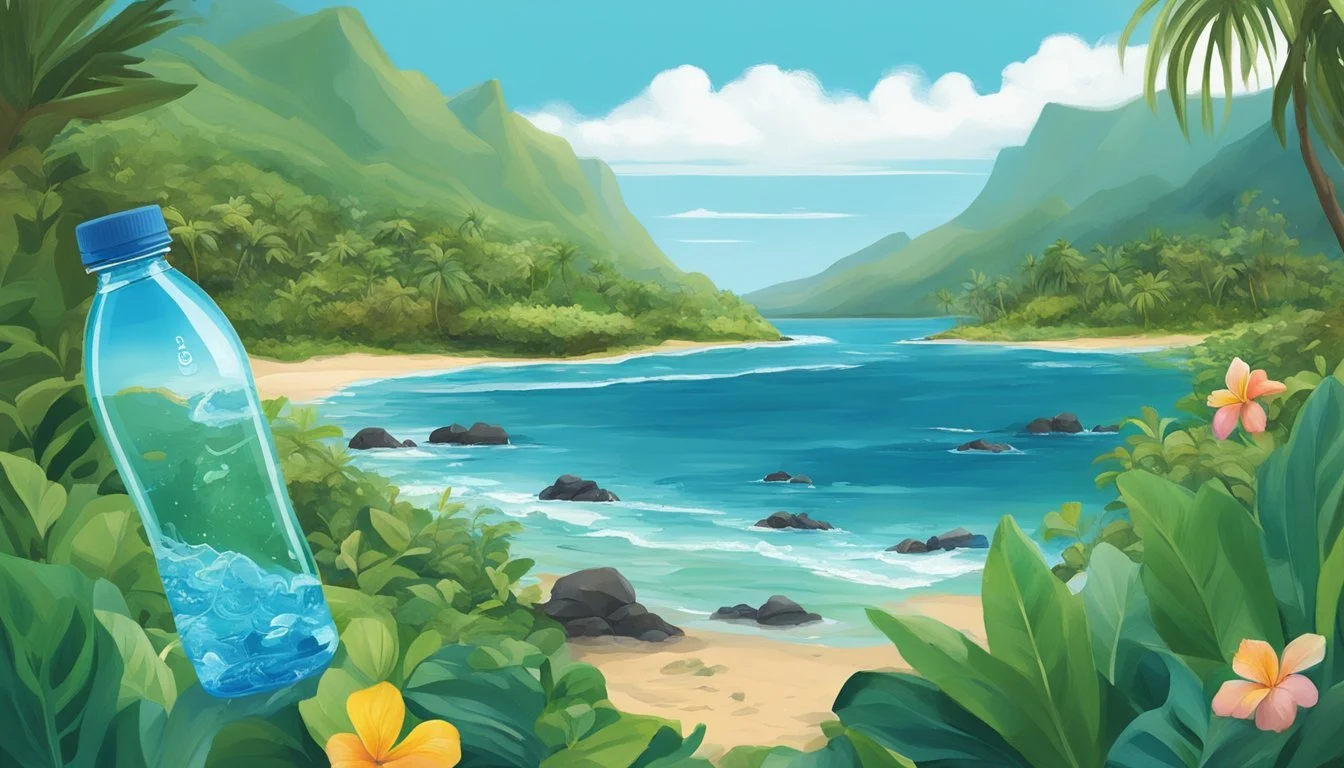Voss vs. Hawaiian Springs
A Comparative Analysis of Bottled Water Quality
Voss and Hawaiian Springs are two prominent names in the premium bottled water market, each claiming unique benefits for hydration. When directly comparing the two, Voss stands out for its purity and sleek packaging, while Hawaiian Springs offers a refreshing taste rooted in its volcanic origins. Consumers often face a dilemma choosing between these brands due to their distinct characteristics and quality.
Voss is known for its crisp, clean flavor and minimalist design, making it a favorite at high-end restaurants and events. Its water is sourced from an aquifer in Norway and is touted for being exceptionally pure. The iconic glass bottle adds an extra level of sophistication, attracting consumers who value both taste and aesthetics.
On the other hand, Hawaiian Springs boasts water sourced from deep volcanic wells in Hawaii, offering a naturally alkaline and smooth drinking experience. This brand appeals to those seeking a more exotic and naturally-occuring bottled water option, emphasizing health benefits and unique taste.
Understanding Bottled Water
Bottled water comes in various types, each offering unique qualities and potential health benefits. The bottling process and regulation standards ensure these products are safe and of high quality for consumers.
Different Types of Bottled Water
Spring Water is sourced directly from a natural spring, containing natural minerals and electrolytes. Artesian Water is drawn from a confined aquifer, providing inherent purity due to natural filtration through rock beds. Purified Water undergoes treatments such as reverse osmosis or distillation to remove impurities, making it safe but stripping away natural minerals. Tap water often serves as the base for purified water.
Here's a quick comparison:
Type of Water Source Key Characteristics Spring Water Natural Springs Contains natural minerals, often with a balanced pH Artesian Water Artesian Aquifers Naturally filtered, often bottled at the source Purified Water Municipal Water Processed to remove impurities, may include reverse osmosis
The Bottling Process
The bottling process differs based on the type of water. For spring and artesian water, it is often bottled at the source to maintain purity. Purified water, derived from municipal sources, undergoes extensive treatment. Reverse osmosis and filtration remove contaminants, ensuring safe drinking water. The final step may include ultraviolet light treatment to ensure sterility.
Bottles are typically made from PET plastic, which is free from harmful chemicals like BPA. High-quality water brands emphasize using clean bottling environments to prevent contamination.
Regulation Standards for Safety and Quality
Bottled water is regulated to ensure safety and quality. Agencies like the FDA in the United States set standards paralleling those for tap water. Regulations mandate regular testing for contaminants, pH balance, and safe mineral levels. Bottled water companies must meet stringent guidelines for cleanliness during the bottling process and ensure their products are free from harmful bacteria and chemicals.
Regular audits and safety checks are conducted to maintain high standards. Compliance with these stringent regulations ensures that consumers have access to safe, high-quality bottled water, regardless of the brand or type.
Profile of Voss and Hawaiian Springs
Voss and Hawaiian Springs are two prominent bottled water brands, each with unique origins and distinct sources. Understanding their background and methods of production is essential to appreciating their qualities.
The Origin Story
Voss originated in Norway, known for its pristine environment and rigorous water quality standards. Launched in 1998, it quickly gained a reputation for excellence and became associated with luxury and purity.
Hawaiian Springs was founded in 1995 and is bottled from the Big Island of Hawaii. It prides itself on delivering natural spring water sourced from one of the most ecologically diverse locations on Earth.
Water Source and Aquifers
Voss draws its water from an underground aquifer in the remote wilderness of Southern Norway. This aquifer is surrounded by ancient, glacial rocks, ensuring minimal human contamination and maintaining the water’s purity.
Hawaiian Springs sources its water from a natural spring located in the volcanic regions of Hawaii. The water filters through porous lava rock, which naturally enhances its mineral content and provides a unique taste that reflects the island’s geology.
Production and Packaging
Voss stands out with its sleek, cylindrical glass bottles, which underscore its premium image. These bottles are not just stylish but also environmentally friendly, as they reduce plastic use and promote sustainability.
Hawaiian Springs opts for eco-conscious packaging, using BPA-free plastic bottles that are 100% recyclable. Emphasizing sustainability, their bottles ensure that the environmental footprint is minimized while still providing durability for transport.
By examining these key aspects—from origin to packaging—consumers can make an informed choice between Voss and Hawaiian Springs based on their preferences and values.
Tasting and Flavor Profile
When comparing Voss and Hawaiian Springs, it's essential to evaluate their taste and flavor profile closely. By considering elements like taste tests, insights from water sommeliers, and the influence of mineral content, one can get a clear understanding of the distinctions between the two.
Analyzing Taste
Voss Artesian Water is often praised for its clean and crisp taste, attributed to its source in a pristine underground aquifer in Norway. This pure origin gives Voss a distinct lack of any metallic or chemical aftertaste, making it particularly refreshing.
In contrast, Hawaiian Springs offers a slightly sweet and smooth flavor, thanks to its natural filtration through volcanic rock. The water sourced from the Big Island of Hawaii provides a unique taste reminiscent of the tropical environment. This gives Hawaiian Springs a subtle complexity that many enthusiasts appreciate.
Water Sommelier Insights
Water sommeliers frequently analyze Voss and Hawaiian Springs for their mouthfeel and minerality. Voss is described as having a soft texture with a neutral pH, making it versatile and easy to pair with various cuisines.
Hawaiian Springs is noted for its medium-bodied mouthfeel and slightly alkaline pH. Sommeliers often highlight this water’s bright and smooth aftertaste, making it ideal for complementing delicate dishes or enjoying on its own.
Mineral Content and Flavor
Mineral content can significantly impact the flavor profile of bottled water. Voss contains relatively low levels of minerals like calcium and magnesium, enhancing its clean and crisp taste. This low mineral content results in a water that feels light on the palate and does not overpower other flavors.
Hawaiian Springs, enriched with minerals like silica and calcium, offers a different experience. The silica contributes to a smooth texture, while the calcium enhances the natural sweetness. This mineral composition provides Hawaiian Springs with a distinct flavor that sets it apart from many other bottled water brands.
By understanding these specific attributes, consumers can make a more informed choice between Voss and Hawaiian Springs based on their personal taste preferences.
Health and Hydration
Choosing the right bottled water affects hydration, body balance, and athletic performance due to variations in pH levels and electrolytes. Here are key insights into how Voss and Hawaiian Springs water compare in these aspects.
Hydration Needs and Water Choice
Proper hydration is essential for maintaining health. Voss water, sourced from an underground aquifer in Norway, is prized for its purity and mineral content. Hawaiian Springs, on the other hand, is natural artesian water from Hawaii, known for its smooth taste.
Voss contains fewer dissolved solids, making it a cleaner option for those with specific hydration needs.
Hawaiian Springs water has a slightly higher mineral content, potentially providing additional benefits for fluid balance.
The right choice depends on individual hydration needs and personal preferences in taste and mineral content.
PH Levels and Body Balance
The pH level of water can influence the body’s acid-alkaline balance. Voss has a neutral pH of around 7, making it neither too acidic nor too alkaline.
Hawaiian Springs water usually has a slightly alkaline pH, around 7.7 to 8.1.
Alkaline water proponents suggest that such water can help neutralize acid in the bloodstream, potentially leading to better health outcomes. Neutral pH waters like Voss are generally suitable for everyday hydration, as they are closer to the body's natural pH.
Electrolytes and Athletic Performance
Electrolytes such as sodium, potassium, and magnesium are vital for maintaining fluid balance and muscle function, particularly during exercise.
Voss does not have a significant electrolyte content, hence it may not be ideal for intense physical activities requiring electrolyte replenishment.
Hawaiian Springs contains natural minerals that could aid in electrolyte replenishment, important for athletes or individuals with high physical exertion levels.
Consumers should consider their activity levels and electrolyte needs when selecting between these waters. Voss is ideal for everyday hydration needs, while Hawaiian Springs might provide an edge for those requiring higher electrolyte intake.
Environmental and Social Impact
Voss and Hawaiian Springs both have distinct approaches and commitments to reducing environmental impact and contributing positively to society. Their methods range from sustainable packaging to community engagement.
Environmental Footprint of Bottling
Voss uses natural spring water sourced from Southern Norway and packages it in distinctive glass bottles, which are reusable. This reduces plastic waste, but the glass production process is energy-intensive.
On the other hand, Hawaiian Springs bottles its water in recyclable PET plastic, which is more lightweight, reducing the carbon footprint during transportation. However, plastic recycling rates can vary significantly based on geography and local policies.
Societal Considerations
Voss supports various global initiatives through donations and partnerships aimed at providing clean water access to underprivileged communities. Their efforts help highlight the disparity in water availability and aim to make a social impact.
Hawaiian Springs has a strong local presence in Hawaii, contributing to local communities by creating jobs and supporting environmental education programs. This localized approach ensures that they have a direct, positive impact on the communities where they operate.
Sustainable Practices in Production
Voss employs several sustainable production practices, including the use of renewable energy sources in its bottling plants and promoting the use of their reusable glass bottles. These practices highlight their commitment to environmental stewardship.
Hawaiian Springs emphasizes its commitment to preserving the natural ecosystems from which water is sourced. By limiting water extraction to sustainable levels and continuously monitoring the environmental impact, they aim to ensure long-term sustainability. Additionally, partnerships with conservation groups further reinforce their environmental responsibility.
Boxed Water, Ethos Water, Flow, Path, and Castle Rock are other brands with varied approaches to sustainability, from using renewable packaging to supporting water quality initiatives. These diverse strategies showcase the industry's efforts to minimize environmental impact and enhance social responsibility.
Comparing Brands and Prices
Voss and Hawaiian Springs are two well-known bottled water brands with distinct market positions and pricing strategies. Understanding their market stance and the relationship between cost and quality helps consumers make informed decisions.
Market Position and Brand Comparisons
Voss is a premium brand originating from Norway, known for its elegant cylindrical glass bottles and a reputation for purity. It targets high-end consumers and is often found in upscale venues. The water is sourced from underground aquifers, promising chemical-free purity.
Hawaiian Springs stands out as another high-quality water brand, sourced from Hawaii’s pristine springs. This brand appeals to those who seek natural and environmentally friendly products. It boasts a softer taste profile, attracting consumers who prefer subtler flavors in their water.
Evian and Fiji are comparable high-end brands. Evian offers water sourced from the French Alps, while Fiji gets its water from an artesian aquifer in Fiji. Both brands are celebrated for their mineral content and smooth taste. Dasani and Aquafina, on the other hand, are more mainstream, providing reliable but less-exclusive options. SmartWater and Essentia focus on added electrolytes and alkalinity, appealing to health-conscious consumers.
Cost vs. Quality Analysis
Voss water is priced at a premium, reflecting its upscale branding and packaging. A 500ml bottle of still Voss can cost around $3-$5, influenced by its imported Norwegian origin and sophisticated packaging. The brand promises a crisp, clean taste, justifying the high price for many consumers.
Hawaiian Springs offers competitive pricing without compromising on quality. A 500ml bottle typically ranges from $1.50-$3. The brand’s focus on natural spring water and environmentally friendly practices attract budget-conscious consumers seeking premium quality.
Compared to Evian and Fiji, Voss and Hawaiian Springs are similarly priced, but the packaging and brand story often sway consumer preference. Evian and Fiji also hover around the $2-$3 range for a 500ml bottle.
Mainstream brands like Dasani and Aquafina are more affordable, generally priced under $1 for a comparable size, focusing on accessibility over luxury. SmartWater and Essentia, priced between $2-$3 per 500ml bottle, appeal to those valuing enhancements like electrolytes and higher pH levels.
Consumer Experiences and Reviews
Consumers have distinct preferences and levels of satisfaction with Voss and Hawaiian Springs. Both brands aim to secure customer loyalty, but they achieve varying degrees of success through their quality and service.
Customer Satisfaction and Feedback
Voss water is frequently praised for its crisp taste and elegant packaging. Many consumers appreciate its minimalist, glass bottle design, which conveys a sense of luxury and sophistication. Taste and appearance are significant factors in customer satisfaction for Voss.
In contrast, Hawaiian Springs has won fans with its distinctive soft taste derived from its volcanic source. Customers often describe the water as smooth and refreshing. The purity of the water is a key selling point, and many consumers feel a connection to the brand's Hawaiian heritage.
Some feedback highlights issues. Voss can be seen as expensive, leading to occasional discontent about its price-to-value ratio. Hawaiian Springs sometimes receives mixed reviews regarding availability, as it can be harder to find in stores compared to other brands.
Loyalty and Repurchase Rates
Voss tends to attract a loyal customer base largely through its premium image and consistent quality. Many consumers who try Voss become repeat customers, often willing to pay more for what they perceive as a superior product. Brand loyalty for Voss is strengthened by its visibility in upscale venues and social media presence.
Hawaiian Springs also enjoys solid repurchase rates, particularly among those who prioritize natural origin and unique taste. Customers loyal to this brand often cite the environmental appeal and distinctive taste profile as reasons for their ongoing support. The brand's connection to Hawaii adds an emotional appeal.
Overall, both brands manage to secure a base of repeat customers, though Voss often benefits from a slightly more widespread recognition and a high-end market positioning.
More About Voss
More About Hawaiian Springs
Acqua Pana vs Hawaiian Springs: Which Bottled Water is Better?
Aqua Carpatica vs Hawaiian Springs: Which Bottled Water is Better?
Aquafina vs Hawaiian Springs: Which Bottled Water is Better?
Arrowhead vs Hawaiian Springs: Which Bottled Water is Better?
Boxed Water vs Hawaiian Springs: Which Bottled Water is Better?
Castle Rock vs Hawaiian Springs: Which Bottled Water is Better?
Core Hydration vs Hawaiian Springs: Which Bottled Water is Better?
Deer Park vs Hawaiian Springs: Which Bottled Water is Better?
Essentia vs Hawaiian Springs: Which Bottled Water is Better?
Hawaiian Springs vs 1907water: Which Bottled Water is Better?
Hawaiian Springs vs 7-Select: Which Bottled Water is Better?
Hawaiian Springs vs Alkaline88: Which Bottled Water is Better?
Hawaiian Springs vs Antipodes: Which Bottled Water is Better?
Hawaiian Springs vs Big Chill: Which Bottled Water is Better?
Hawaiian Springs vs BodyArmor: Which Bottled Water is Better?
Hawaiian Springs vs Cascade Mountain: Which Bottled Water is Better?
Hawaiian Springs vs CBD Living: Which Bottled Water is Better?
Hawaiian Springs vs Crystal Geyser: Which Bottled Water is Better?
Hawaiian Springs vs Crystal Lake: Which Bottled Water is Better?
Hawaiian Springs vs Essence pH10: Which Bottled Water is Better?
Hawaiian Springs vs Hawaii Volcanic: Which Bottled Water is Better?
Hawaiian Springs vs Kirkland Signature: Which Bottled Water is Better?
Hawaiian Springs vs Liquid Death: Which Bottled Water is Better?
Hawaiian Springs vs Mananalu: Which Bottled Water is Better?
Hawaiian Springs vs Open Water: Which Bottled Water is Better?
Hawaiian Springs vs Proud Source: Which Bottled Water is Better?
Hawaiian Springs vs Pure Life: Which Bottled Water is Better?
Hawaiian Springs vs Purely Sedona: Which Bottled Water is Better?
Hawaiian Springs vs Refreshe: Which Bottled Water is Better?
Hawaiian Springs vs Richard's Rainwater: Which Bottled Water is Better?
Hawaiian Springs vs Simple Truth: Which Bottled Water is Better?
Hawaiian Springs vs Solan de Cabras: Which Bottled Water is Better?
Hawaiian Springs vs Talking Rain AQA: Which Bottled Water is Better?
Hawaiian Springs vs The Well: Which Bottled Water is Better?
Hawaiian Springs vs Tru Alka: Which Bottled Water is Better?
Hawaiian Springs vs Weird Water: Which Bottled Water is Better?
Hawaiian Springs vs Whole Foods 365: Which Bottled Water is Better?
Hawaiian Springs vs Whole Foods Italian Still Mineral water: Which Bottled Water is Better?
Ice Mountain vs Hawaiian Springs: Which Bottled Water is Better?
Icelandic Glacial vs Hawaiian Springs: Which Bottled Water is Better?
Just Water vs Hawaiian Springs: Which Bottled Water is Better?
Mountain Valley Spring Water vs Hawaiian Springs: Which Bottled Water is Better?
Nestle Pure Life vs Hawaiian Springs: Which Bottled Water is Better?
Poland Spring vs Hawaiian Springs: Which Bottled Water is Better?
San Pellegrino vs Hawaiian Springs: Which Bottled Water is Better?
Smartwater vs Hawaiian Springs: Which Bottled Water is Better?
Topo Chico vs Hawaiian Springs: Which Bottled Water is Better?
Zephyrhills vs Hawaiian Springs: Which Bottled Water is Better?






